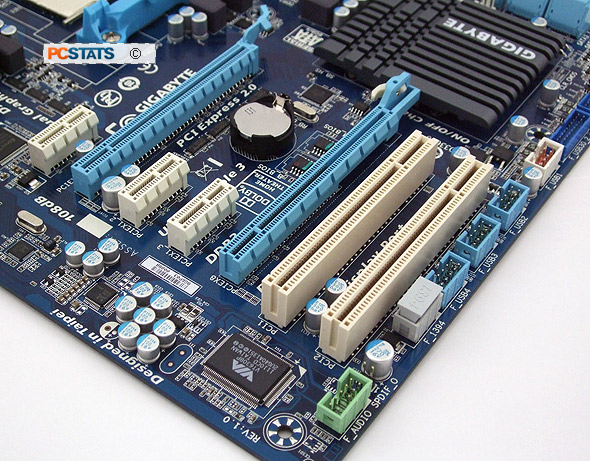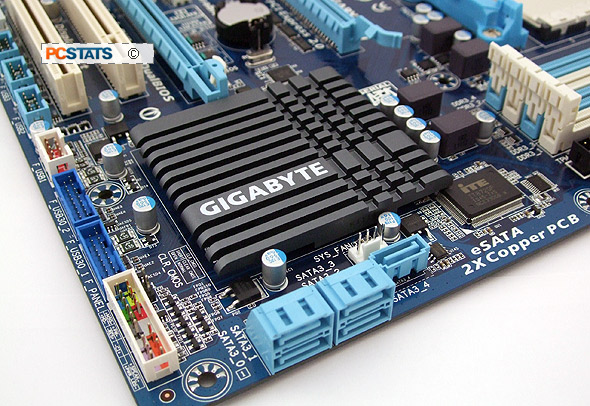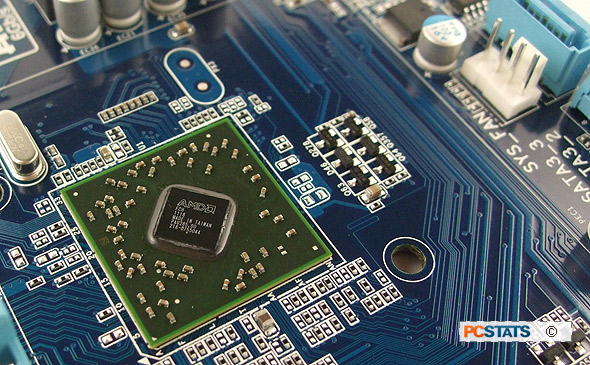The
Gigabyte GA-A75-UD4H motherboard has a pair of PCI Express 2.0 x16 slots that operate at
x16 and x8 modes, respectively. Three PCI Express x1 and two PCI slots complete the list of
expansion options.
|

|
Along the bottom edge of the board we find headers for
the following ports: front panel audio, Firewire, (3) USB 2.0, (2) USB 3.0 and
the front panel connectors. The GA-A75-UD4H has three fan headers, two of
which are 4-pin PWM.
The additional
USB 3.0 comes via a pair of Etron EJ168 controllers. While USB
2.0's 480Mb/s maximum bandwidth was enough for many years,
USB 3.0 expands the bandwidth to a whopping 4.8Gb/s (4800Mb/s) which is more
appropriate for today's large mass storage devices, so it's nice that this board
has (8) USB 3.0 ports. Gigabyte also boosted the electrical
capabilities of the F_USB1 USB 2.0 header (above, white with red
text inside) to support charging requirements of peripherals like the Apple iPad/iPhone while the rest
of the computer is off. This board supports USB 2.0 power demands up
to 1500mA via 'On/Off Charge'.
|

|
Six native 6Gb/s SATA III ports (RAID 0,1,10,JBOD) are supplied via the AMD
A75 chipset. Five SATA jacks are present on the board and one is located at
the rear I/O for eSATA devices.
|

AMD A75
Northbridge
|
The AMD A75 chipset is cooled
by a small passive aluminum heatsink, this chipset communicates with the AMD A8
Fusion APU over a Unified Media Interface (UMI) interface at 2GB/s.
Gigabyte's GA-A75-UD4H
motherboard has four 1.5v DIMMs which supports up to 32GB of
DDR3-1066/1333/1600/1866 memory in a dual channel configuration. If used, the
AMD Radeon HD 6550D IGP will allocate up to 512MB from system memory to
itself.
A simple
passive heatsink cooling the boards' VRM circuitry and power MOSFETs. Only solid
state capacitors are used to manufacturer motherboards these days. This Gigabyte motherboard uses Ultra Durable 3 components. With the
upcoming AMD A85 chipset Gigabyte has upgraded this technology collection to Ultra Durable
5. The changes are pretty interesting, if you want to read about
PCSTATS has a short article here
from Computex 2012.
